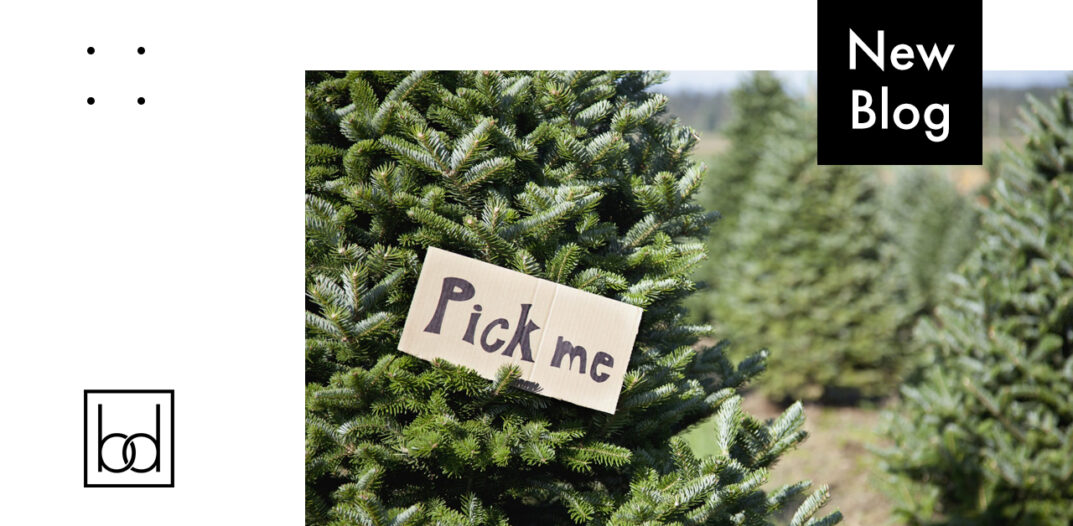
It seems like there are two types of people in the world when Christmas rolls around – those who absolutely love the smell and look of a real Christmas tree, and those who wouldn’t have one in there house for any reason. If you are an artificial tree fan, you’ll find no judgment here. There are many reasons to opt for artificial rather than a live tree, such as allergies in the home and pets who won’t leave the water source alone. Perhaps most importantly, if you will not be able to water your tree daily, a live tree is simply a dangerous fire hazard you will want to avoid.
Luckily today’s artificial trees are often just as beautiful as the real thing, and they offer far more flexibility in terms of how early you can begin decorating, and how long you can leave your tree up during out of town trips. Plus, you can use your tree year after year, saving time and money versus having to purchase a new tree every year.
For many people, an artificial tree just makes sense. But if you find yourself unable to truly get into the Christmas spirit without that fresh smell of cedar or fir, read on for more information about the beloved Christmas tree.
Benefits of Choosing a Real Christmas Tree

The biggest reason some people choose a real tree is simple – they love them! For many of us, we remember with fondness the real trees of our childhood or the evergreen smell takes us back to simpler times. But there are many other reasons to consider a real tree instead of an artificial one. Christmas trees are an agricultural commodity, and choosing to purchase one from a local farm supports a small business owner in your area. Christmas tree farms preserve green space in the local community, and Christmas trees work to clean our air by absorbing carbon dioxide and releasing oxygen.
Once Christmas is over and it time to take down the decorations, your real tree can be recycled, composted or used as a wildlife habitat. Most areas host Christmas tree recycling events in the weeks after Christmas, and if you bring a tree you can often leave with either a free sapling, or a load of mulch for your yard.
But what type of tree should you purchase for your decorative Christmas display? The reason there are several different varieties of Christmas trees on the lots and family farms you pass by is because each species is a little bit different, appealing to people for different reasons. Some trees have stronger branches, which are better for holding up numerous hefty ornaments. Other trees have a very strong fragrance to fill your home, while others are better for more sensitive noses. Read on for a description of some of the main types of trees on the market.
Balsam Fir
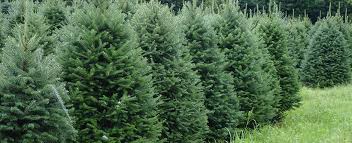
Do you want the smell of your tree to knock people over when they walk in the room? If so, a Balsam Fir is likely your best bet for a Christmas tree, as it is known to be the most fragrant of the common varieties, with a strong and almost spicy scent. Balsam Firs are often the trees people most associate with Christmas, with their dark green color and almost symmetrical cone shape. These trees are also commonly used for other Christmas décor, such as wreaths and bouquets. While you will rarely see them this tall on your local lot, Balsam Firs can grow to a height of 66 feet.
Canaan Fir
The Canaan Fir is a relatively new choice available on Christmas tree lots. It is a hybrid of the Balsam Fir and Fraser Fir, so if you are having trouble deciding between the two, perhaps you should give the Canaan Fir a try, if you can find one. This variety is native to the mountains of West Virginia, and has only recently begun popping up on lots in the metro Atlanta area. This tree gives off a pleasant, but only moderately strong scent, and has strong branches for holding ornaments. With their bright green color and great needle retention, Canaan Firs will likely grow in popularity and become easier to find in the coming years.
Colorado Blue Spruce
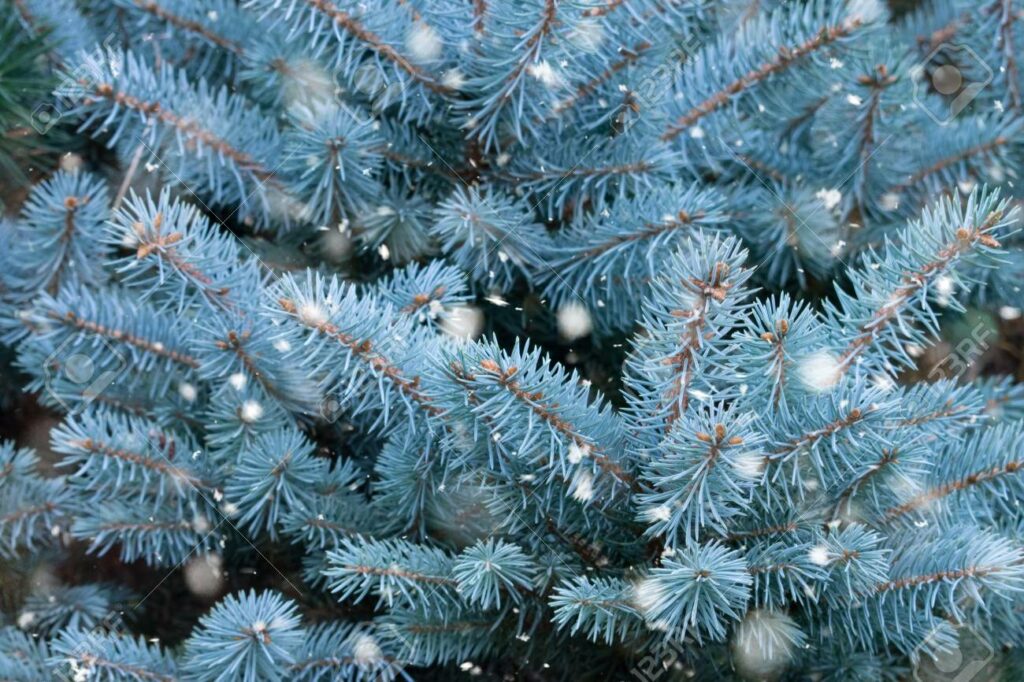
Some people just love the blueish silver appearance of the aptly named Colorado Blue Spruce. This variety is especially appropriate if you are decorating with a snowy winter motif rather than a traditional Christmas display. The branches of the Colorado Blue Spruce are quite stiff and the needles can be sharp, so you may want to wear gloves while handling this tree. This is a great tree to bring into your home if you have pets – since the branches and needles can be sharp your furry friends will find rubbing against them unpleasant and the tree will naturally deter their curious nosing around.
Douglas Fir
Douglas Firs are another popular choice for Christmas trees, even though they aren’t technically fir trees at all. They are actually a variety of pine tree, but with their pyramid shape and big branches that radiate needles in all directions, they are recognized nationwide as an ideal holiday tree. They range from dark green to blue-green in color, and give off a sweeter and more subtle scent than the Balsam Fir. The branches of the Douglas Fir are quite sturdy, but the tree does have one drawback – they are the first tree to drop needles, especially if they do not get plenty of water once cut.
Fraser Fir
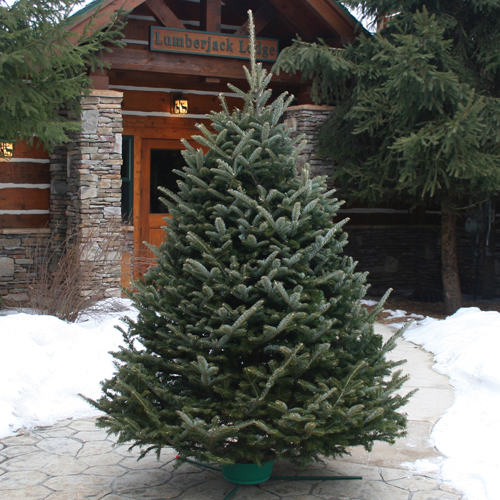
Fraser Firs are the sturdiest of the commonly cut Christmas trees, and their stiff branches will hold up even the heaviest ornaments with ease. Your ornaments will likely stay put on this variety of tree, as the branches are known to angle slightly upward. This means the Fraser Fir is also a great choice for Christmas garland that needs to stay put throughout the season. The Fraser Fir is known for its yellowish-green hue, and strong pleasant scent. Needle retention is high with Fraser Firs, meaning you will have less work cleaning up around your house during the Christmas season. These are also the trees mostly commonly used in the White House’s Christmas display.
Red Cedar

This tree is sometimes referred to as the Pencil Cedar or Aromatic Cedar, and it’s scent and shape explain why. The trees grow tall and thin, and they are a gorgeous addition to an outdoor holiday display. Branches are dense and leaves jet upwards, making them perfect for holding ornaments. The tree has a strong scent of cedar, a bit spicier than other tree varieties. Incidentally, the Red Cedar is the most popular Christmas tree used in Missouri, Oklahoma and Arkansas.
Leyland Cypress
Many people love the feathery leaves and greenish-gray color of the Leyland Cypress, but its advantages are not limited to looks alone. This beautiful tree with a mild scent is recognized as the best Christmas tree for those with allergies. It doesn’t shed needles and does not produce sap, which means there are less allergens around for those who are sensitive.
Scotch Pine

The Scotch Pine is the national tree of Scotland, and is a great all around Christmas tree choice. The branches are strong and sturdy, able to hold numerous strands of lights and many hefty ornaments. The smell of a Scotch Pine is strong and almost universally pleasing. This tree drops very few needles, even during an extended stay inside your home, so you will have less clean-up to do at the end of the Christmas season.
White Pine
The White Pine is the ideal tree for anyone who enjoys the appearance of a natural looking real tree, but doesn’t enjoy a strong Christmas tree smell. If your nose is overly sensitive to such smells, you’ll hardly notice a White Pine is even in the room. The light bluish-green branches of the White Pine are quite flexible, but not very strong – they will not hold up very many weighty ornaments. However, this tree is a perfect choice for anyone decorating with garland and/or ribbons as opposed to common ornaments. In the wild these trees can live for up to 400 years and grow to heights of 230 feet tall, making it the largest pine tree in the United States when grown naturally rather than for the Christmas tree industry.
Caring for Your Real Christmas Tree
Once you’ve decided on a Christmas tree variety, you’ll want to work to extend the life of the tree so that it looks fresh and healthy throughout the Christmas season. First and foremost, make sure your tree’s water supply is filled to the brim at all times. Water level should reach 1-2 inches above the bottom of the tree. Some people swear by additions to the water, such as soda, sugar or aspirin. Experts disagree about whether or not this works, but as far as we can tell, there’s no harm in giving it a try. Mix a small amount of simple syrup into your trees water or crush a low dose aspirin and add to the basin to see if you notice a difference. Use room termpature water when refilling the basin – super cold water isn’t as healthy for the tree, but neither is water that is overly hot.
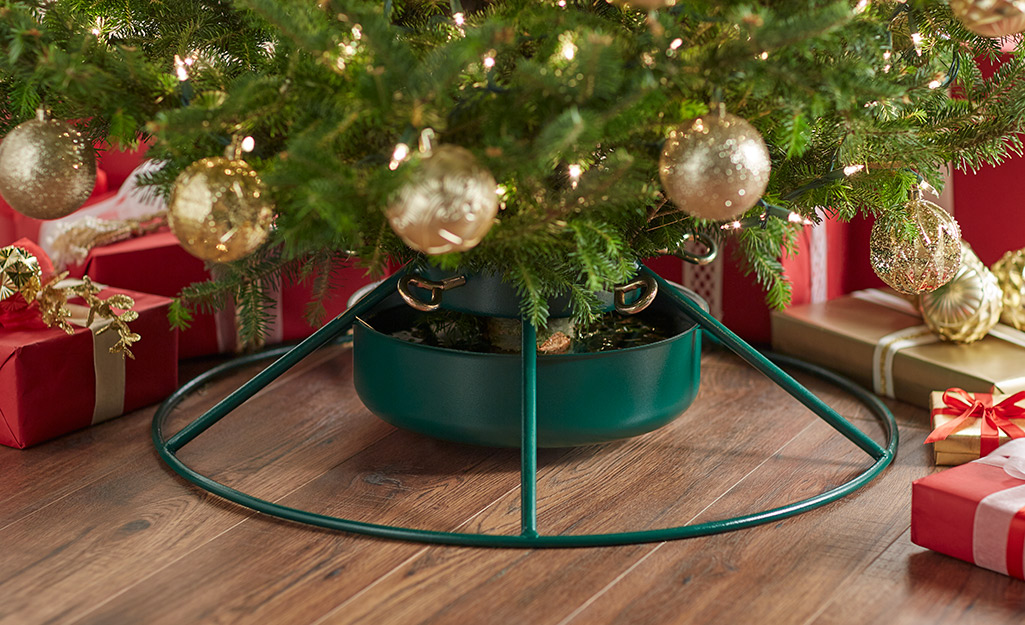
Many trees produce a high amount of sap, which can form a seal over the bottom of the trunk where it has been cut. If the sap dries over the cut, the tree can no longer absorb enough water to remain healthy. If you are purchasing a pre-cut tree, request that a fresh cut be made from the trunk before you load it on your car. If that is not possible, be prepared to make the cut when you get the tree home.
Water isn’t for the base of the tree alone though. Keep a spray bottle nearby and spritz the branches occasionally, being careful of lights and fragile ornaments of course. If its possible to run a humidifier in the room with the tree, that is also a helpful way to keep the tree moist. Don’t be overly concerned about the room temperature where the tree is located though. It’s not necessary to freeze out your family for the sake of the tree. As long as you don’t have your thermostat set to a balmy 80 degrees, your tree should be able to withstand the normal room temperature preferred by your family.

